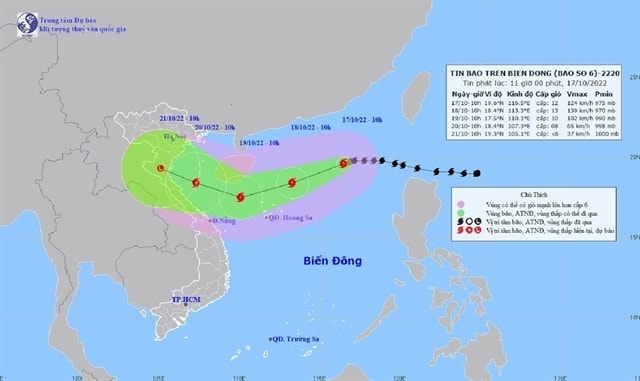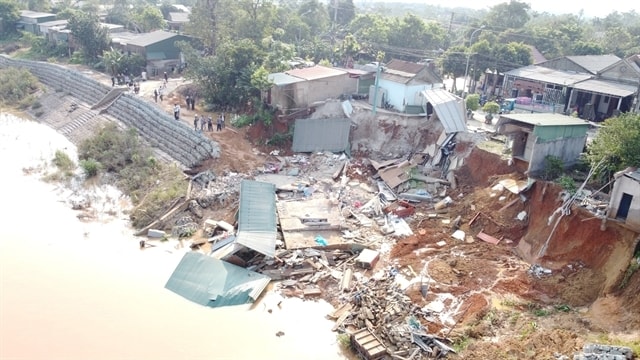Localities warned to stay alert against storm Nesat
News - PublishedTime : 16:34, 17/10/2022

Storm Nesat enters the East Sea and is forecast to cause heavy rain, strong winds and rough seas. VNA/VNS Photo
The storm's eye was located about 600km east-northeast of Hoang Sa (Paracel) at 10 am on October 17.
The strongest winds close to the eye of the storm were 103-133km per hour, according to the National Centre for Hydro-meteorological Forecasting (NCHMF).
In the next 24-48 hours, the storm is forecast to move in a west-northwest direction at a speed of 15km per hour and may get stronger.
The eye of the storm is expected to be about 380km east-southeast of central coastal provinces from Ha Tinh to Thua Thien-Hue at 10 am on October 19.
In the next 48-72 hours, the storm is forecast to continue moving in a west-northwest direction at a speed of 15km per hour and may weaken.
Due to Nesat's influence, the East Sea’s north area, including Hoang Sa, will experience heavy rain, strong winds and rough seas.
To proactively respond to the storm, minimise damage, and stabilise production, the National Steering Committee for Natural Disaster Prevention and Control’s office has sent a dispatch, requesting coastal localities and relevant ministries and sectors to keep a close watch on forecasts and the development of the storm to notify captains and owners of vessels at sea.
Ministries, sectors and localities must monitor and count ships operating in storm-affected areas; regularly maintain contact with ship owners to promptly deal with any circumstances.
They were also requested to take measures and make appropriate production plans to ensure human and property safety, especially for aquaculture cages.
The committee on October 17 sent an urgent message, requiring authorities of Quang Nam, Quang Ngai and Binh Dinh to ensure safety for vessels working at sea.
As of 6.30am on October 17, there are 50 vessels from these localities with 489 fishermen onboard still operating around Hoang Sa area.
Coping with floods

Heavy rain caused a landslide along the Thach Han river bank in central Quang Tri province, killing one person. VNA/VNS Photo
Prime Minister Pham Minh Chinh has sent an urgent message, asking authorities of central Da Nang city and Quang Binh, Quang Tri, Thua Thien Hue, Quang Nam and Quang Ngai provinces and relevant ministries and agencies to take drastic measures to promtly deal with the aftermaths of storm Sonca, the fifth storm to hit the East Sea this year.
After weakening from a tropical storm to a low tropical pressure system late last week, storm Sonca caused rainfall of up to 800 mm in many areas in central localities, causing great damage, particularly in Da Nang, Thua Thien Hue, Quang Tri and Quang Nam.
Floods triggered by torrential rain over the past few days killed at least six people (three in Da Nang, two in Thua Thien Hue, one in Quang Nam and one in Quang Tri), according to the latest report from the National Steering Committee for Natural Disaster Prevention and Control.
Flood waters also submerged thousands of houses, caused nine to collapse, damaged 26 others and inundated over 1,000 ha of crops.
Landslides occurred along the sections of national highway 9C in Quang Binh and national highway 15D in Quang Tri, blocking traffic.
The PM asked the localities to take measures to ensure the living conditions for people in affected areas, leaving no one hungry or homeless.
Local authorities were instructed to continue searching for the missing, evacuate locals from dangerous areas or areas prone to landslides and flash floods provide medical treatment to the wounded and burial services for the dead, and arrange temporary accommodation for evacuated people.
The PM asked for the deployment of forces to ensure traffic safety in submerged areas, support people to repair houses, clean the environment, recover damaged infrastructure, especially schools, hospitals, and irrigation facilities.
VNS
